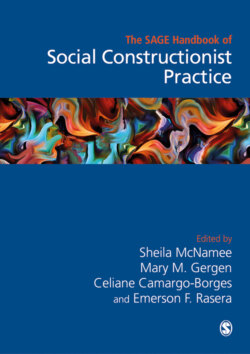Читать книгу The Sage Handbook of Social Constructionist Practice - Группа авторов - Страница 136
На сайте Литреса книга снята с продажи.
Zooming Out on Socio-Material Practices
ОглавлениеResearching socio-material practices is complicated because they seldom recur in isolation, and more commonly are sustained inside broader networks or assemblages. One needs to consider broader cultural and systemic influences shaping that recurrence (e.g., Tomm et al., 2014). In zooming out to research socio-material practices we alternate between considering their recurrence within assemblages and/or networks. The notion of assemblages comes from Deleuze and Guattari (1988) and addresses conditions under which phenomena like practices commingle and develop together. Assemblages have been used to conceptualize emergent health conditions (e.g., Duff, 2013) and political developments (Massumi, 2015). They function as ecologies inside which unpredictable developments emerge, even go viral, in ways unique yet consistent with their interactive elements. It took a particular convergence of factors like Facebook and Twitter, a cultural disgust for political prevarication, online editing tools, etc., for today's creative political meme practices to develop on the Internet.
Networks acquire a procedural familiarity enabling one interaction or practice to foretell the need to engage in a next familiar practice. This is a view some associate with cybernetics (Bateson, 1972) and entails tacitly knowing what to do next in a patterned sequence. However, there is usually an interpretive interactional gap that any practice stitches together (Latour, 2013) – a gap humans fill with their doings, sayings, and relatings. Often such gaps acquire a recurring sense that Guattari (1995) referred to as ‘machinic’. The familiarity and predictability of recurring practices inside networks makes them interesting and potentially liberating targets of critical reflection and reflexive inquiry.
